I’ve been a fan of, and believer in, climbing tree stands ever since I got my first one 25 years ago or so. (Remember the old, wooden TSS?) Climbers have come a long way since those days. They’re much safer, sturdier, lighter and more comfortable. And I have learned a lot more about how to use them effectively.
I must note here that I live and do much of my hunting in Pennsylvania. I’ve used climbers throughout the Northeast and in parts of the Midwest, and I can assure you the United States is not created equal when it comes to trees suitable for climbing stands. Where I can pretty much bank on finding a good climbing tree anywhere I’m hunting in Pennsylvania, Maryland or New York, that is not the case as you move west – and especially southwest. In Kansas, for example, I’ve walked through a 30-acre patch of timber without finding a single tree suitable for a climbing stand.
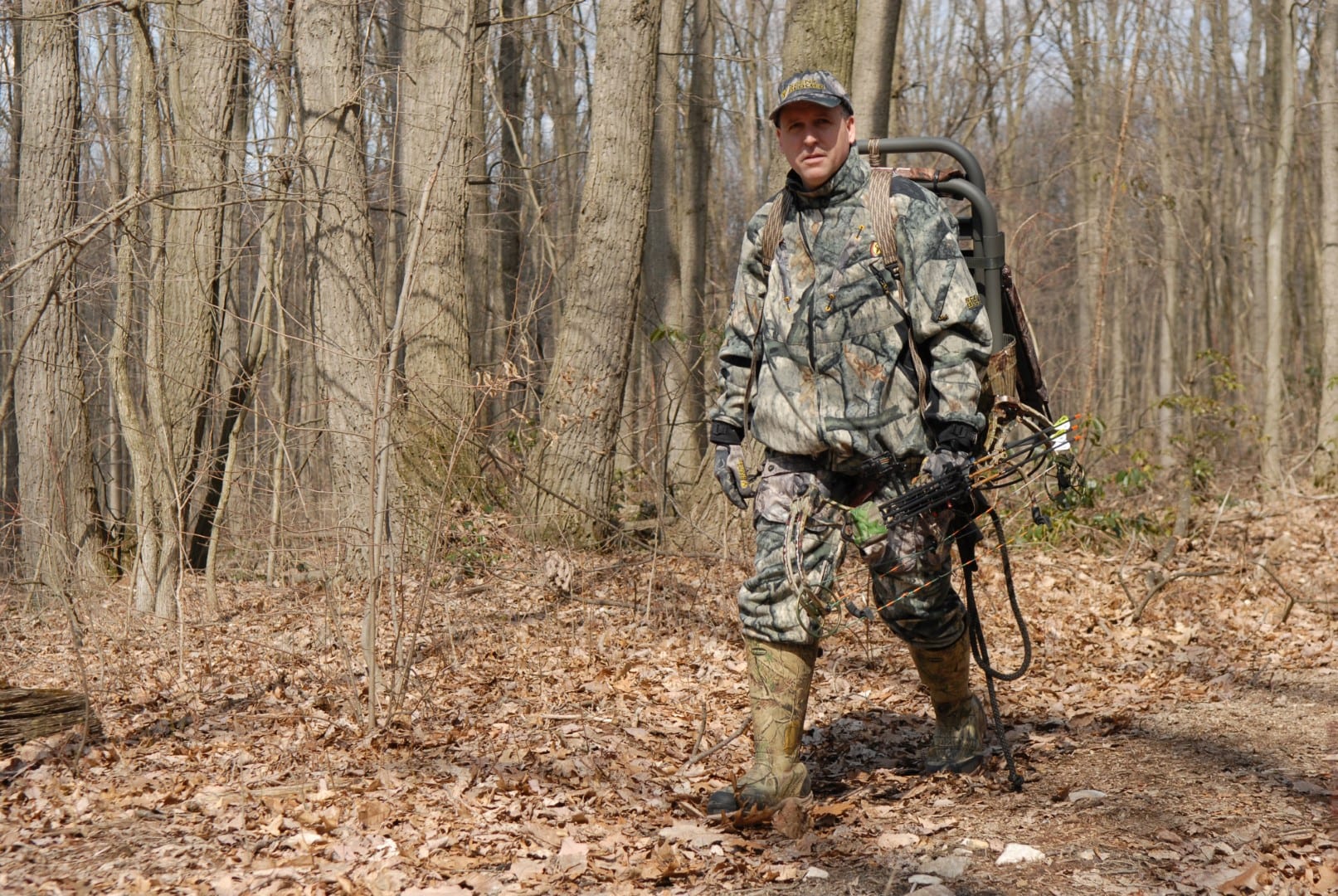
With a climbing stand on your back, you can hunt anywhere…almost.
So I’m fortunate to live in climbing-stand heaven. Mostly thanks to the tulip poplar. That’s the tree God made specifically with the climbing-stand deer hunter in mind. They’re tall, they’re straight and mature trees usually have no branches within 70 or 80 feet of the ground.
Deer hunters in Southeast states, like Georgia and South Carolina, might argue they’ve got the perfect climbing trees, with their longleaf pines. But I’d counter the bark of a tulip poplar gives my climbing stand a better grip. No need to start a fight, though. Let’s say we’re both in good climbing country.
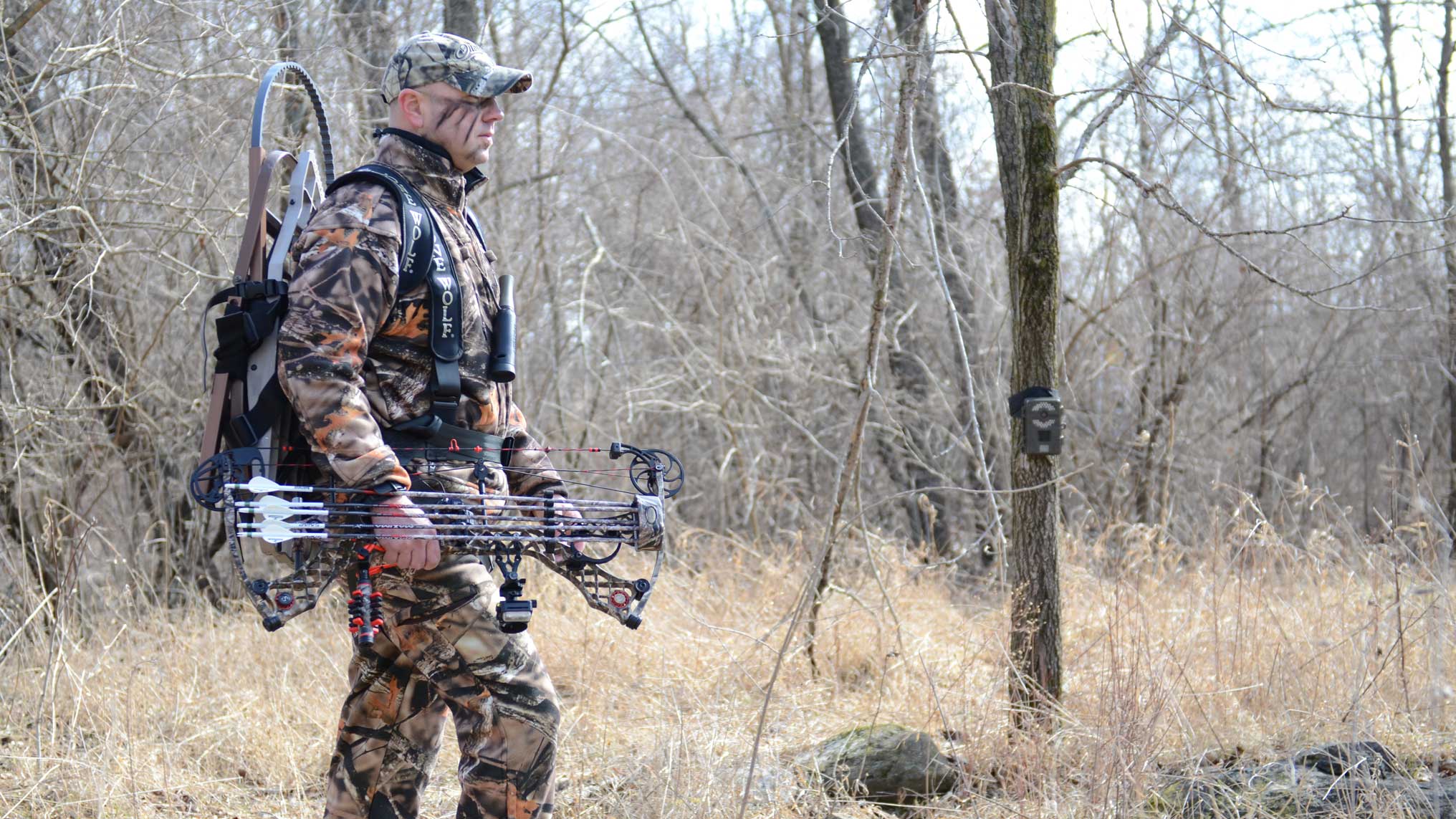
The slim profile of Lone Wolf climbers make them a cinch to carry.
Go Big
My philosophy on choosing a climbing stand is to go big. I’m 6 feet tall and I weigh 200 pounds, so I’m somewhat on the tall side. (Be sure to check a stand’s rated weight limit before buying, so you know if it’s a good fit.)
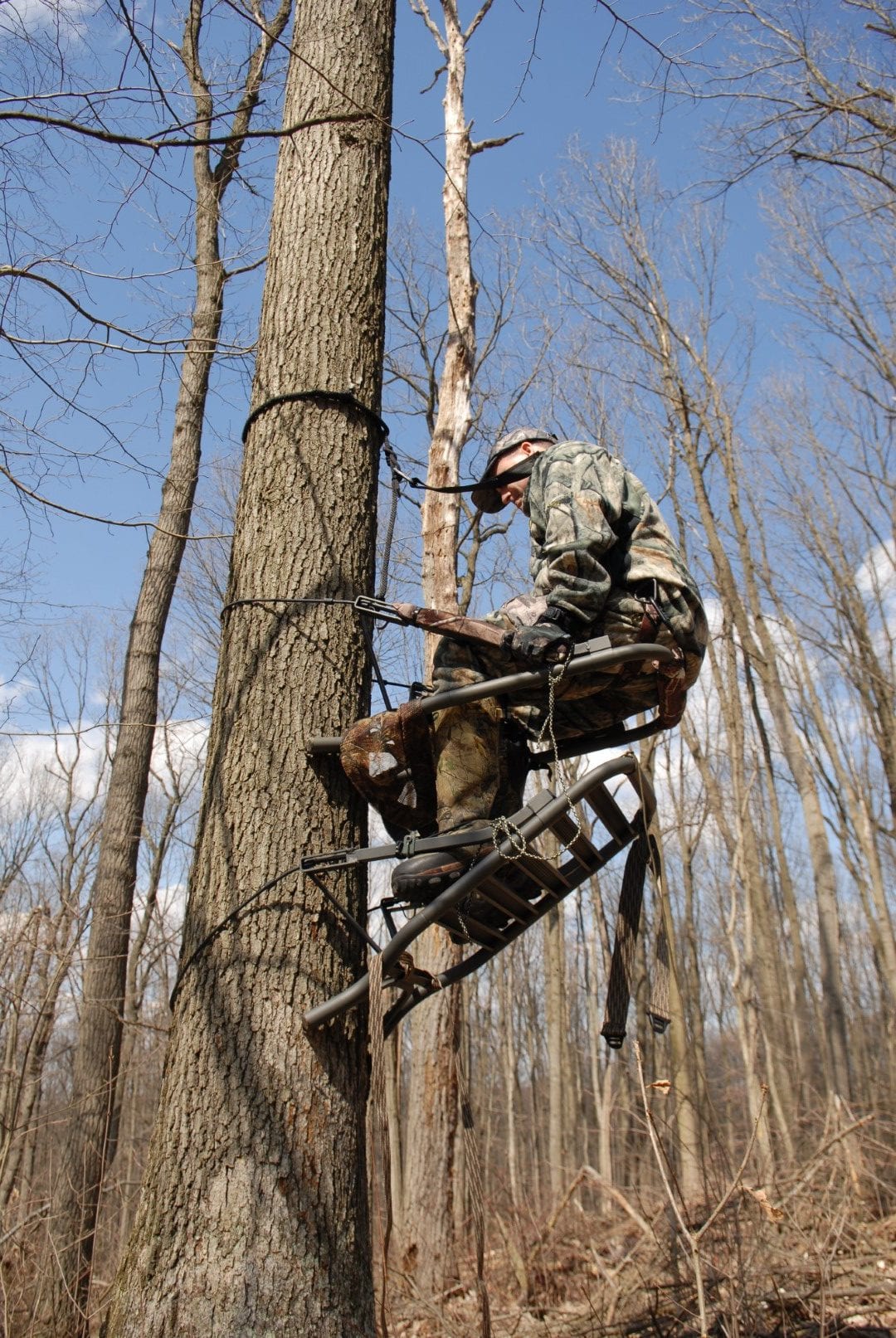
Always use a safety harness, from the ground up.
Big stands are comfortable. My Summit Titan has a platform that’s 31 inches long by 21 wide. They also feel safer, because you have lots of room to move around. Hunting up high can be disorienting to some folks. I’d rather be on the biggest platform I can haul on my back when I’m 20 feet up, than worry about where my feet are the whole time I’m hunting.
Lone Wolf also makes an incredibly rugged and quiet climbing treestand that has plenty of room on the platform.
But comfort and security doesn’t come without a cost. Big stands are heavier no question. When I strap my loaded backpack to my treestand, I could be hauling about 40 pounds on my back. I don’t care. There are lots of ways to deal with that weight, and I’d rather figure that out than go with a small stand.
In the offseason, I run and lift weights so my back, shoulders and legs are prepared for hauling my big climber. I also allow plenty of time for hiking to my spot, so that I can rest on the way if necessary.
One thing I’ve found extremely helpful is using specialty backpack straps. Let’s face it, the straps that come with climbing stands usually don’t cut it. They dig into your shoulders, or they don’t lift the stand high enough on your back to keep it from banging your legs.
The Climb
The beauty of the climbing tree stand is that it’s your ladder and your stand, all in one package. You climb trees in your stand. Naturally, there can’t be any branches between the ground and your preferred hunting height. Or at least, no branches that you can’t safely cut with a limb saw that should always be within reach when you’re climbing a tree for the first time.
One of the first things you’ll discover using a climbing stand is trees taper as they go up. You’ve got to set your stand at the bottom with the platform pitched up at just the right angle so that it will be level when you reach your hunting height. After hunting from a few different trees, you can get pretty good at judging how to set your stand properly.
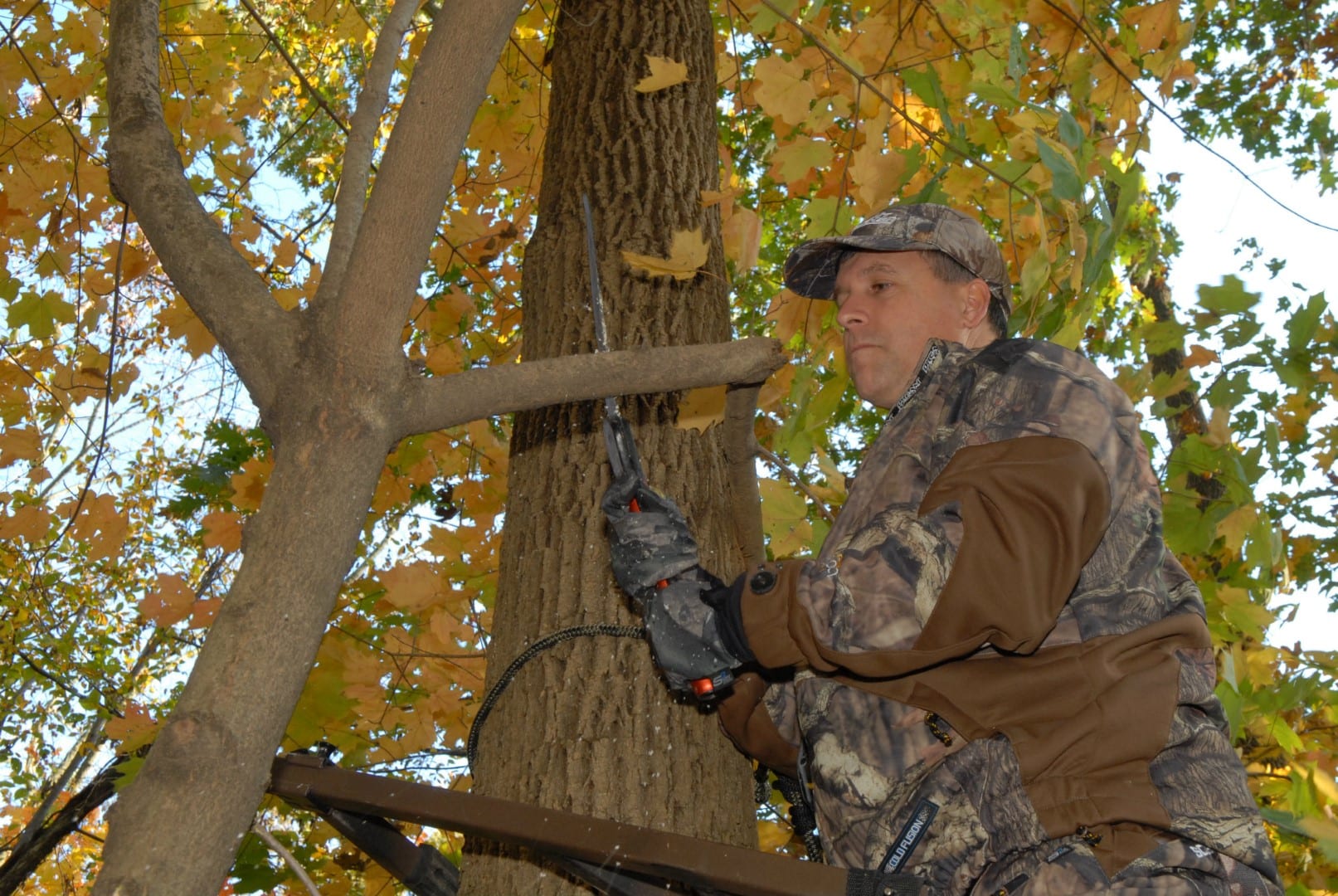
Always have a limb saw handy when you climb a tree for the first time.
At your hunting height, you want the stand platform to be level or slightly pitched up. That upward pitch will force you to lean back against the tree trunk. That’s OK. What you don’t want is for the stand to be pitched down toward the ground. If it is, climb down and reset the stand to account for that angle.
Most modern climbing stands have metal contact points where the stand grips the tree. Older ones often employ rubber contacts. Those can slip on wet tree trunks and smooth bark. You have to really pay attention to slips if you’re using a stand with rubber contact points.
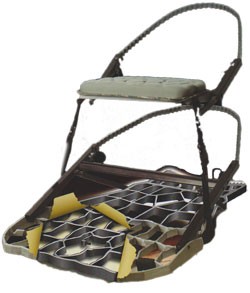
The Lone Wolf climber is one of the quietest treestands on earth.
Even stands that have metal teeth can slip, though. Some trees are rock hard – hickory, maple, ironwood – and don’t allow the stand teeth to dig in. Try to avoid these trees to avoid problems with slipping.
Climbing tree stands employ two pieces – the platform and the climbing aid, which often doubles as your seat. Lash the two pieces together when you climb. If your feet slip out of the platform, you won’t have to worry about it falling out of reach.
We’re talking about hunting from a tree stand, so, naturally, we’re going to mention full-body safety harnesses. Wear one. When using a climbing stand, attach your harness to the tree at ground level, and slide it up the tree as you make your way up. If anything goes wrong, you’re covered.
Hiding On a Telephone Pole
Hang-on tree stands can be tucked in among branches to provide cover for the hunter. By comparison, a hunter in a climbing stand on the side of a telephone-pole tree sticks out like a sore thumb. But there are ways to find cover in a tree that’s suitable for a climbing stand.
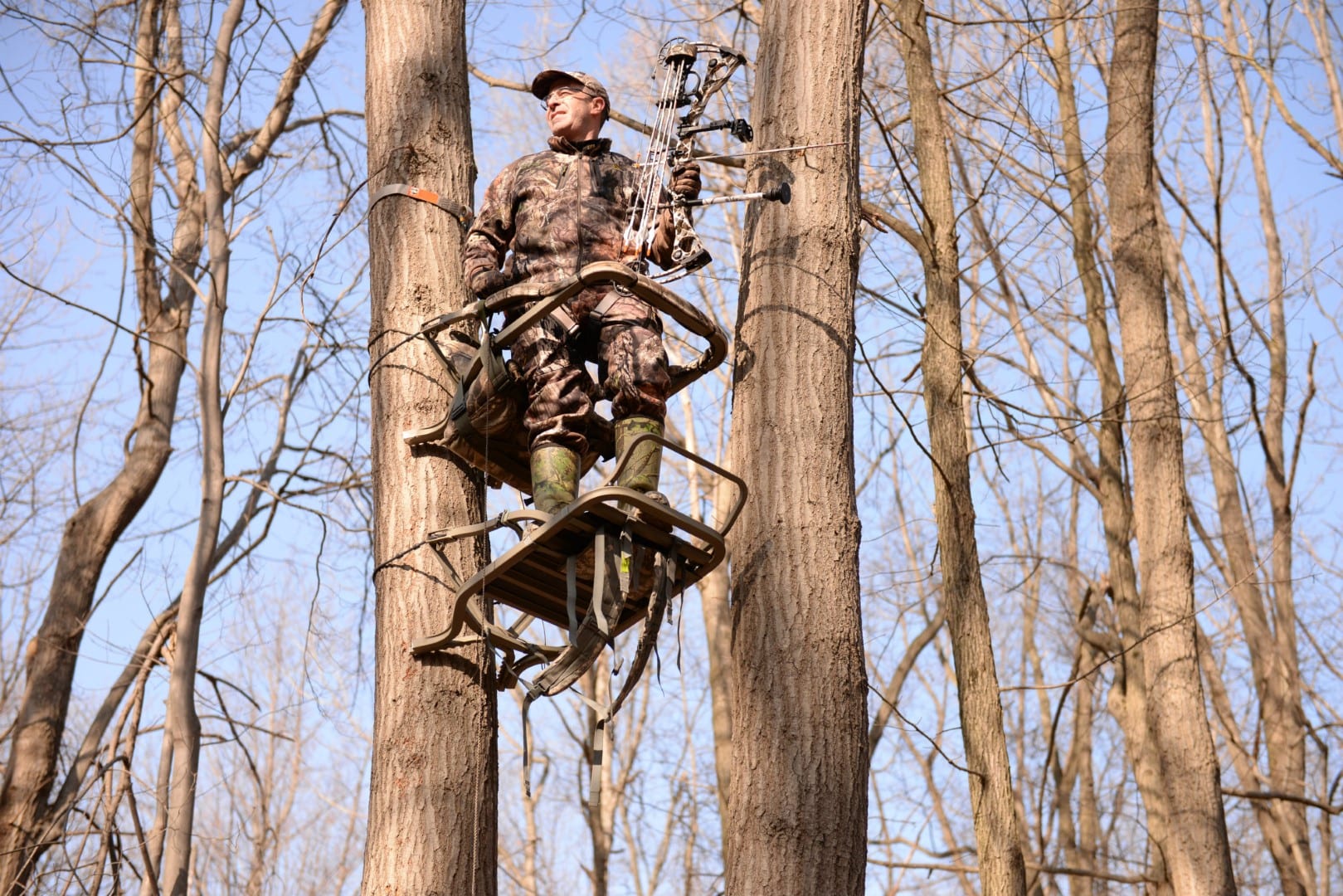
Two trees standing close together offer good cover to hunters using climbing stands.
Perhaps my favorite way is to climb a tree that’s growing right next to another one. When I reach the height where I want to climb, I’ll turn my stand to face the tree next to me. The two trees will help break up my silhouette, and hide me from an approaching buck.
Another good bet is to climb to a height where there are branches. Branches growing out of the tree I’m in, or branches growing from a nearby tree that extend into the area where my stand is set, will both help me disappear from a deer’s eyes. Trim what you must to have clear shooting lanes, and you’re set.
Height also will help you hide. If you’re used to hunting 15 feet up, try going 25 or 30. Pressured deer often know to watch the trees for signs of danger, but they don’t usually crane their necks to look up to 25 or 30 feet.
As I already mentioned, you should be wearing a full-body safety harness from the time you leave the ground no matter how high into a tree you climb. But understand that if you fall from 30 feet because you’re not wearing a harness, death or serious injury are not only probable, they’re virtually guaranteed. Wear a harness.
Also recognize that hunting from 30 feet creates steep shot angles – especially at deer under 10 yards away. Adjust your shot placement accordingly to account for that angle. From extreme heights over 20 feet, it’s actually a good idea to take your shot at 20 or 25 yards, rather than let the deer walk in closer. You’ve got a better chance of a double-lung hit at that distance. When a deer’s in tight, and you might only be able to catch one lung at a severe angle.
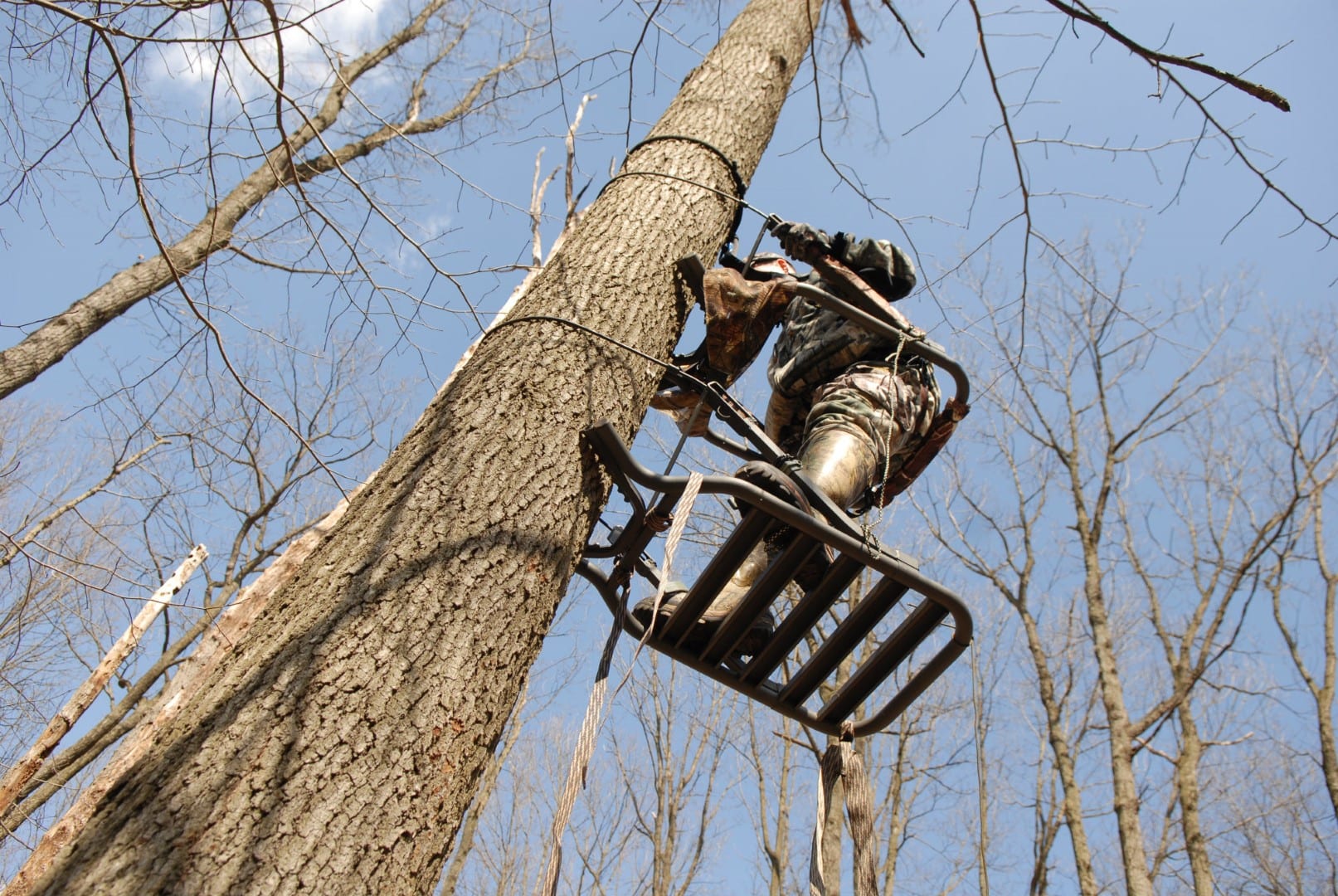
Climbing higher – above 20 feet – will help hunters “hide” from wary deer.
You don’t have to climb that high, though. Maybe you just need to climb up 7 or 8 feet to get above some tall grass or shrubs. There are no hard and fast rules for climbing stands. Use them to suit your needs.
Perhaps the climbing tree stand’s greatest advantage is the mobility it affords. You can hunt wherever you can haul it and find the right tree. If you need to move after your initial set up, you can – quickly and quietly.

 By
By 



